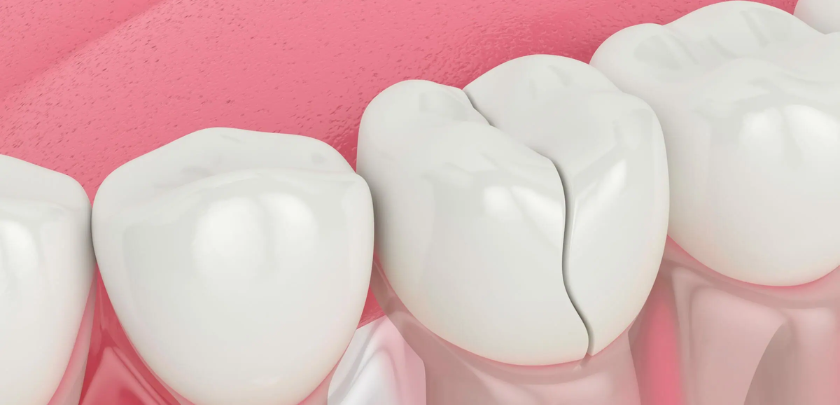
Cracked teeth can be a real source of worry. Not only can they be painful, but they can also be unsightly and make you self-conscious about your smile. But the good news is, cracked teeth are a common dental issue, and dentists have a toolbox full of effective ways to fix them.
In this blog post, we’ll delve into the world of cracked teeth, exploring the different types of cracks, the symptoms to watch out for, and most importantly, the repair options your dentist might recommend.
So, take a deep breath, ditch the grimace, and let’s get cracking (pun intended) on understanding how dentists work their magic on these dental dilemmas.
The Lowdown on Cracked Teeth: Cracks Big and Small
Cracks can happen to anyone, and they come in various flavors (though thankfully, not literally!). Here’s a breakdown of the two main types:
- Craze Lines: These are hairline cracks that only affect the tooth’s enamel (the outer layer). They’re usually painless and mostly an aesthetic concern.
- Cracked Tooth: This is a more serious issue where the crack extends deeper into the dentin (the layer beneath the enamel) and can sometimes reach the pulp (the tooth’s core, containing nerves and blood vessels). Cracked teeth can be quite painful, especially when biting down.
Ouch! Signs and Symptoms of a Cracked Tooth
Knowing the signs of a cracked tooth can help you identify a potential problem early on. Here are some red flags to watch out for:
- Pain when biting down or chewing
- Sharp pain that comes and goes
- Sensitivity to hot or cold foods and drinks
- Swelling around the tooth
- A visible crack in the tooth
If you experience any of these symptoms, don’t hesitate to schedule an appointment with your dentist. Early diagnosis and treatment can prevent further damage and save your tooth.
The Fix is In: How Dentists Repair Cracked Teeth
The good news is that dentists have a range of treatment options available, depending on the severity of the crack and its location. Here’s a breakdown of the most common methods:
- Dental Bonding: This is a great option for minor cracks, especially craze lines. The dentist applies a tooth-colored resin to the crack, shapes it, and hardens it with a special light. It’s a relatively simple and painless procedure.
- Dental Veneers: These are thin shells of porcelain or resin that are bonded to the front surface of the tooth. Veneers are a good choice for both cosmetic repair and added strength for slightly more serious cracks. They require removing a small amount of enamel from the tooth beforehand.
- Dental Crowns: For deep cracks, especially those affecting the back teeth, a crown is often the best solution. A crown encases the entire tooth, restoring its strength and functionality. Getting a crown usually involves multiple appointments – one to prepare the tooth and take an impression, and another to place the permanent crown.
- Root Canal Therapy: If the crack extends into the pulp, the dentist will likely recommend a root canal. This procedure removes the infected pulp, cleans the inside of the tooth, and seals it. A crown is usually placed afterward to protect the tooth.
- Tooth Extraction: In rare cases, if the crack is too severe or the tooth is already badly damaged, extraction may be necessary. Don’t worry, though, modern dentistry offers excellent tooth replacement options like implants or bridges to restore your smile and chewing function.
Taking Care of Your Repaired Tooth
Once your dentist has fixed your cracked tooth, it’s important to practice good oral hygiene to prevent future problems. Here are some tips:
- Brush your teeth twice a day with a soft-bristled toothbrush and fluoride toothpaste.
- Floss daily to remove plaque and food particles from between your teeth.
- Avoid chewing on hard foods like nuts or ice, which can put stress on your teeth.
- Wear a mouthguard if you play sports or grind your teeth at night.
Remember, prevention is always better than cure. Regular dental checkups and cleanings can help identify small cracks before they become major problems. So schedule your next appointment – a healthy smile is a happy smile!
